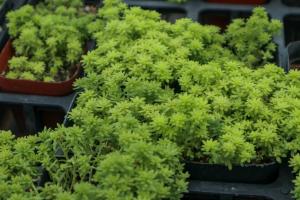How Often Should I Water My Newly Planted Lilac Bush?
Lilacs are beautiful and fragrant plants that can add a lot of value to any garden. However, when cultivating these plants, it is important to ensure that they are watered properly. Newly planted lilac bushes need more attention when it comes to watering as compared to established plants. The reason for this is that newly planted lilacs have a delicate root system that needs to be adequately watered to ensure proper growth.
Watering Frequency for Newly Planted Lilacs
Newly planted lilacs should be watered frequently, especially for the first year after planting. Ensure that the soil surrounding the root area of the plant is continually moist. However, care should be taken not to overwater as this may lead to root rot, which can damage or even kill the plant. Watering should be done slowly and gently, allowing the water to seep into the soil without causing any erosion.
Watering Techniques for Newly Planted Lilacs
There are various watering techniques that can be used when ensuring that newly planted lilacs receive adequate water. These include using soaker hoses or drip irrigation systems, which allow for slow and gentle application of water directly to the root area. Alternatively, hand watering can be done using a watering can or a hose fitted with a gentle, rain-like spray nozzle. It is essential to make sure that the water is applied evenly to the root area of the plant without causing any disturbance to the soil.
Factors Affecting Watering Frequency for Lilacs
There are various factors that can influence how often newly planted lilac bushes should be watered. These include the climate, soil type, and drainage capacity. In hot and dry weather conditions, watering may need to be increased to ensure that the plant receives adequate moisture. Conversely, in cold and wet conditions, watering should be done with caution as overwatering can lead to root rot. The type of soil can also affect watering frequency, with sandy soils requiring more frequent watering than clay soils. Drainage capacity is also an essential factor as poorly drained soils can lead to waterlogging, which can damage the roots of the plant.
Signs of Overwatering or Underwatering Lilac Plants
It is essential to note the signs of overwatering or underwatering lilac plants, which can both lead to damage or death of the plant. Overwatering can lead to yellowing of the leaves, drooping of the branches, and root rot, which causes the roots to become mushy and rot. Underwatering, on the other hand, can lead to wilting of leaves, and the plant becomes prone to pests and diseases. It is essential to monitor the watering of newly planted lilacs and make any adjustments as needed.
Conclusion
Proper watering is essential when cultivating newly planted lilac bushes. It is recommended that the plants are watered frequently, especially during the first year after planting. However, care should be taken not to overwater, which can lead to root rot, or underwater, which can lead to wilting of the plant. Therefore, it is essential to monitor the plant's watering requirements and adjust as needed to ensure that the plant receives adequate moisture for proper growth.

 how many times do yo...
how many times do yo... how many planted tre...
how many planted tre... how many pine trees ...
how many pine trees ... how many pecan trees...
how many pecan trees... how many plants comp...
how many plants comp... how many plants can ...
how many plants can ... how many plants and ...
how many plants and ... how many pepper plan...
how many pepper plan...































